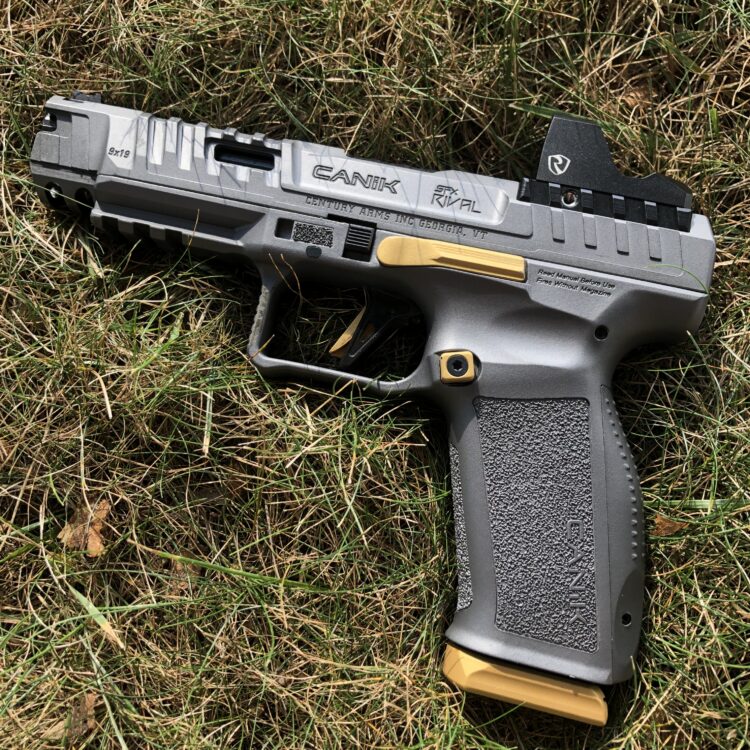I know many will still reject the thought of an auto-adjust optic, and while I initially had felt the same way I wanted to give this optic a fair chance over the months I’ve been using it to determine whether or not it was a worthwhile alternative to other optics with manual adjustment. Rather than list the specs of the optic again you can check out the Riton Optics website for all the details here, or you can check out my initial impressions of the optic. Riton 3 Tactix PRD 2 Initial Impressions
Honestly, this optic does really well in auto adjust with different light conditions. Drawing from concealment I’ve never been able to catch the dot adjusting from the darkness of the holster to bright sunlight, it’s always clearly bright enough to see. Moving from bright areas to darkened rooms it still provides enough light to the dot to be clearly visible. Transitioning from indoors to windows on bright sunlit days it still works fine. Then there’s the question of auto adjust with a weapon mounted light or bright handheld. With a Surefire x300u mounted the dot still adjusts rapidly enough to not be fooled by the difference between the environment and the WML hotspot, I’ve never lost the dot whether using the WML or even brighter handhelds.
I’ve also found that occluding the dot allows for an even more visible dot, whether you’re occluding your dot for the visual training benefits it offers or the extra bit of visibility on extremely bright days its a helpful option. Whether or not you agree with occluding the dot or not isn’t the focus here, I’ll simply point out that there are dozens of extremely high level shooters that have utilized this simple trick to work on a hard target focus for shooting with an optic. You can read more in depth about this in an article by GMJP here. The best part is you can try it out for yourself with a simple piece of tape over the front of your lens and if you don’t like it, remove the tape and carry on.
Back to the optic, it passed all the tests right? These are the main failure points, it can’t be running into any issues correct? Unfortunately there was at least one situation I couldn’t get past and the optic just failed the same every time I tried this lighting situation. If I was in darkness, or even a mostly dark area, and aimed into a brightly lit area the dot couldn’t adjust to the correct brightness to be visible. Trying it in my basement if there was a light on in one corner and I was standing at the far end in darkness aiming toward the light the emitter or whatever adjusts could not correctly brighten the dot so that I could pick it up against the bright background. Which is understandable because I believe there is only one sensor picking up light and its on the top of the optic body, so it’s picking up the lack of light there and projecting a brightness level adequate for where it is. not where it’s pointed.
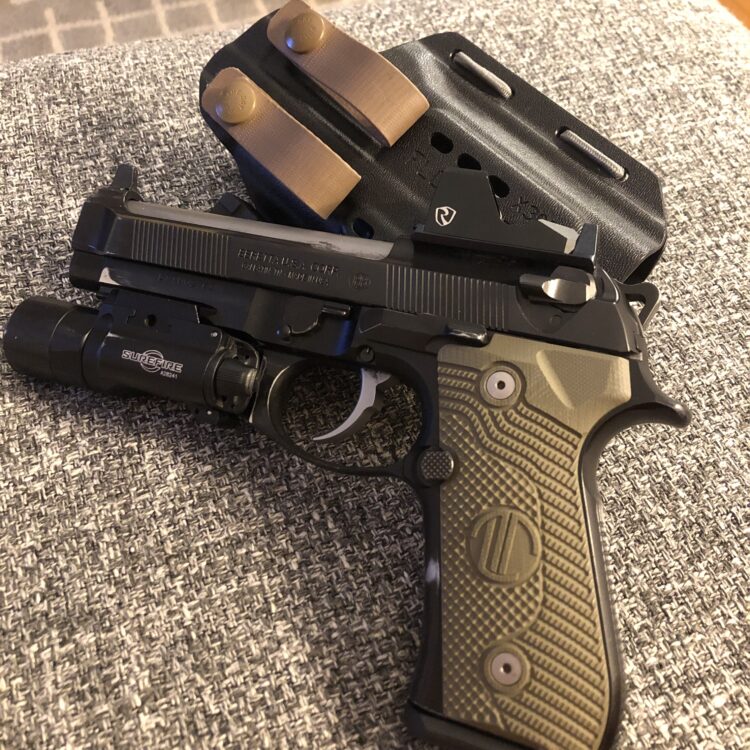
That means total failure right? Optic not visible in that low light situation, such as being outside in the dark and aiming into a brightly lit doorway or some other scenario means it’s not a viable option? Well, that depends on you, what you’re using it for, and what your standards are. I will say a weapon light or bright handheld eliminated this issue and allowed the dot to adjust properly without any wash out from the intensity of the light. Surefire X300, Surefire Fury 1k Lumen handheld, Surefire EDCL2-T with 1,200 lumens, Streamlights, and various other lights had compatible issues with the optic. Failure in that situation yes, but introducing any kind of light source immediately solved the issue.
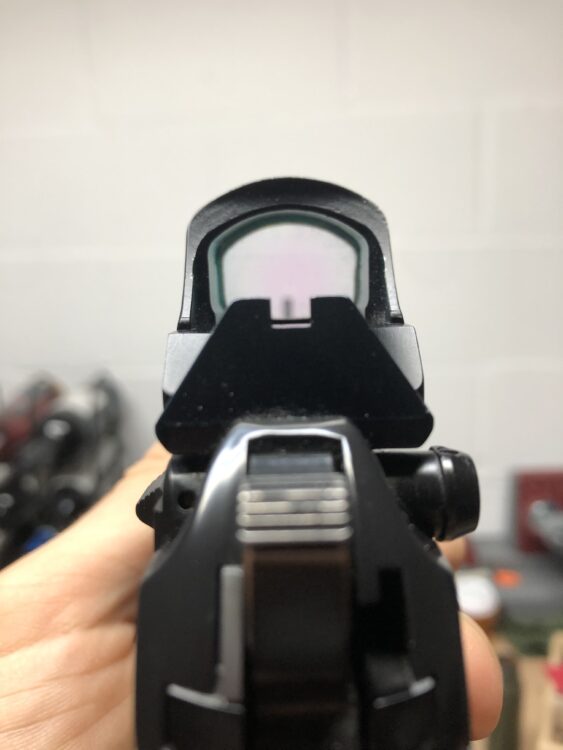
Window size is always going to be one of the questions asked almost immediately of any pistol mounted optic. Honestly, it’s really hard to gauge how exactly a window compares on paper. For example, Holosun 407/507 series have the same window size as the venerable Trijicon RMR, however the RMR window appears smaller because the optic body blocks part of your view of window when held at pistol distances from your face. The Riton body seems to squat lower, however I never found the window size lacking. In fact with how slim the body of the optic is I’m sure with some direct milled slide cuts you might be able to co-witness standard height irons. Mounted to a Canik Rival that standard height front sight was just barely too low to be visible, using the rear sight built into the body of the optic and the front sight resulted in my impacts being roughly 6″ high at 15 yards. I knew the impacts would be off because aligning the standard height sight with the optic rear sight put the dot JUST out of the window. My access to firearms isn’t limitless, so while I didn’t have a gun that worked with the stock irons, I am almost positive something out there will work with stock irons.
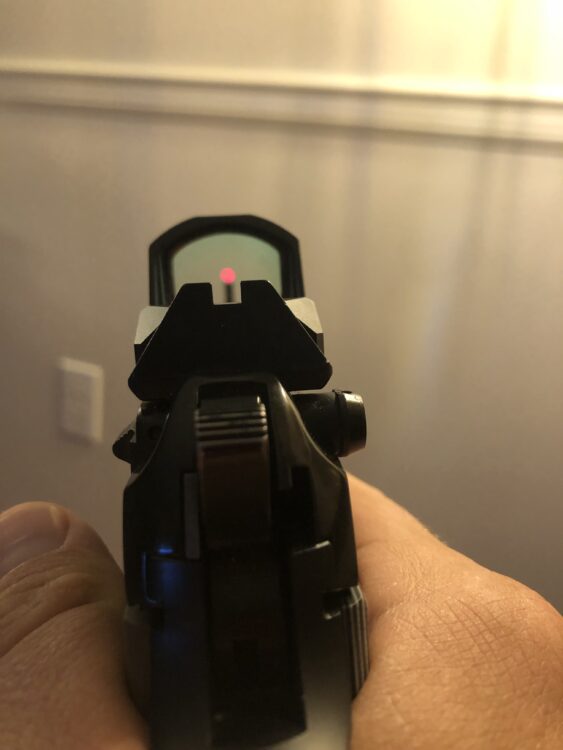
The optic body is low, which is great for unrestricted visibility of the window, and it worked amazing on the Rival. However, switching it over to my 92 Elite LTT I experienced a small issue. LTT designed their RDO system with plates that have a built in rear sight. The plates match popular cuts and then the built in rear iron sight is designed to be high enough to work with all optics in that footprint. Meaning they’re tall enough to be visible over the thicker optic body of the RMR, with the Riton having such a low body footprint the window becomes blocked slightly by the rear iron sight. This isn’t to say it’s unusable or anything like that, but you do lose some of your visible window for this one situation. Something to consider if you like the RDO solution from Langdon Tactical.
Durability seems to be everyone’s favorite topic when it comes to slide mounted pistol dots. Spoiler alert, I don’t have the dedication or budget of other reviewers, the 500 round torture test and drop tests of Sage Dynamics aren’t something I performed in reviewing this optic. In the last few months this slide has been on two different guns for 1,000-1,500 rounds. Not a super high round count, but it was also carried and dry fired daily. I don’t do a formal drop test, I understand why it’s done but it’s not something I’m in a position to perform. I did have the optic fall from the top of the washing machine down into the washing machine and land on the optic, aside from a marring to the paint surface the optic didn’t show any other signs of damage. The optic continued to function without issue and held zero throughout the review.
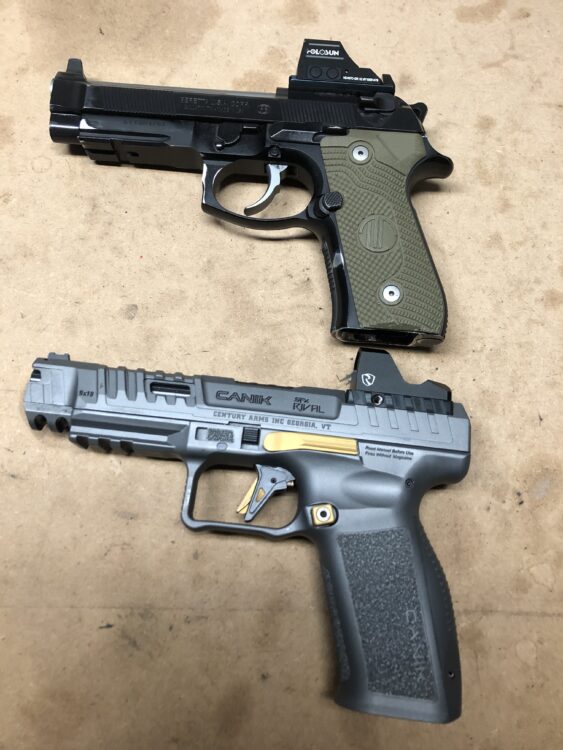
Every optic has limitations and I’ve come to realize it’s not truly my place to tell a reader to go out and buy whatever item, I’m simply here to give my experiences with whatever I’m reviewing. The auto adjust is going to be a stopping point for many, and I won’t argue with that. I did enjoy the crispness of this 3MOA dot over my Holosun 2MOA dots, but every eye is different so it may not be as distinct of a difference for others. The optic held up to my uses with minimal signs of wear, held zero, and for less than 200 bucks you can get your foot in the door of the optic world. Fitting one of the most popular optic footprints and having a built in rear sight are additional benefits. If you have the opportunity to try one out I’d recommend it, but I’d always suggest trying any optic to see the benefits and issues for yourself. Exact details of the optic can be found on the manufacturer’s website, and if you have any further questions about my review feel free to drop them below.

